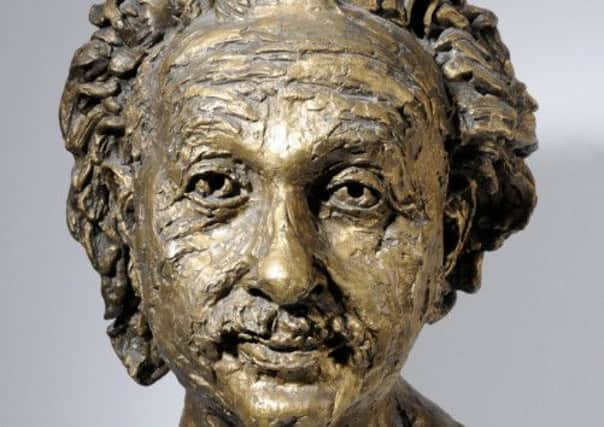Einstein captured in bronze as he fled


In 1933, Albert Einstein was forced to flee Germany pursued by Nazi assassins. During his flight, he sat for a portrait by sculptor Jacob Epstein. The result is regarded as one of the finest portrait busts in 20th-century art – and is currently on display at the Stanley and Audrey Burton Gallery in Leeds. How this sculpture came to be is one of the most dramatic stories in the history of art.
The story begins in summer 1933. Einstein had been falsely associated with a book entitled The Brown Book of Hitler Terror which outlined some of the worst Nazi atrocities to date. German newspapers printed shocking stories about “Einstein’s infamy” and dismissed his Theory of Relativity as “Jewish physics”. One newspaper featured a large photograph on its front cover with the words “Not Yet Hanged” emblazoned across it, and a reward of £1,000 was offered by Hitler for the assassination of the physicist.
Advertisement
Hide AdAdvertisement
Hide AdThe real threat to Einstein’s life became unbearable, and fearing for the safety of those who had hidden him in Belgium, he made the heartbreaking decision to leave his family and friends behind in Europe for the sanctuary of America.
A plan was hatched by Einstein’s wife Elsa to have him secretly smuggled out of Belgium, to England in his first step towards reaching America. She contacted the Naval Commander and MP Oliver Locker-Lampson, a member of the UK’s refugee committee, to arrange Einstein’s covert rescue.
Locker-Lampson convinced a reporter from the Sunday Express to travel by boat to collect Einstein under the cover of night. With the mission a success, Einstein was taken to a small secluded shack on the outskirts of the seaside town of Cromer on the east coast.
Once safe, there was a bizarre mixture of secrecy and publicity about Einstein’s newly-found refuge. While his location was kept a closely-guarded secret, pictures were released to the Press showing Einstein posing with two attractive women holding large hunting shotguns, with Locker-Lampson’s words in the caption: “If any unauthorised person comes near they will get a charge of buckshot.”
Advertisement
Hide AdAdvertisement
Hide AdIt was here, holed up in a shed somewhere on the Norfolk coast, that Einstein was to wait until arrangements could be made for him to leave for America. In a remarkable twist, Locker-Lampson saw fit to arrange for the noted Jewish sculptor Jacob Epstein to make a portrait of the scientist – perhaps fearing that Einstein, still with a bounty on his head, may not have the opportunity to pose for a portrait again.
Einstein spent two hours a day for a week sitting for the portrait. Epstein found it difficult to create the portrait because Einstein was such a heavy smoker, and the shack was so small and dingy that it made it difficult to see.
Einstein was in good humour throughout the sitting. Epstein said: “He enjoyed a joke and had many a jibe at the Nazi professors, one hundred of whom in a book had condemned his theory. ‘Were I wrong,’ he said, ‘one professor would have been quite enough’.” Because time was short, the artist considered the portrait to be unfinished. However, others regard it as one of Epstein’s greatest achievements – it is a sculpture that flickers with life and insight, and marks a dramatic period in the lives of two great men.
Albert Einstein (1933) is on display as part of the Jewish Artists in Yorkshire exhibition at the Stanley and Audrey Burton Gallery until June 20.
Champion of Henry Moore
Advertisement
Hide AdAdvertisement
Hide AdSir Jacob Epstein (1880-1959) was an American-born Jewish sculptor who worked in Britain from 1905 until his death. He was famous for his vivid portraits including Winston Churchill, Joseph Conrad and Princess Margaret. He caused controversy with his unusual stone carvings including Jacob and the Angel, Adam, and his Tomb for Oscar Wilde. He was one of the first sculptors to champion Yorkshire-born artist Henry Moore. Many of his sculptures are part of Leeds City Art Gallery’s permanent collection, and his giant carving Adam is on display in the foyer of Harewood House.